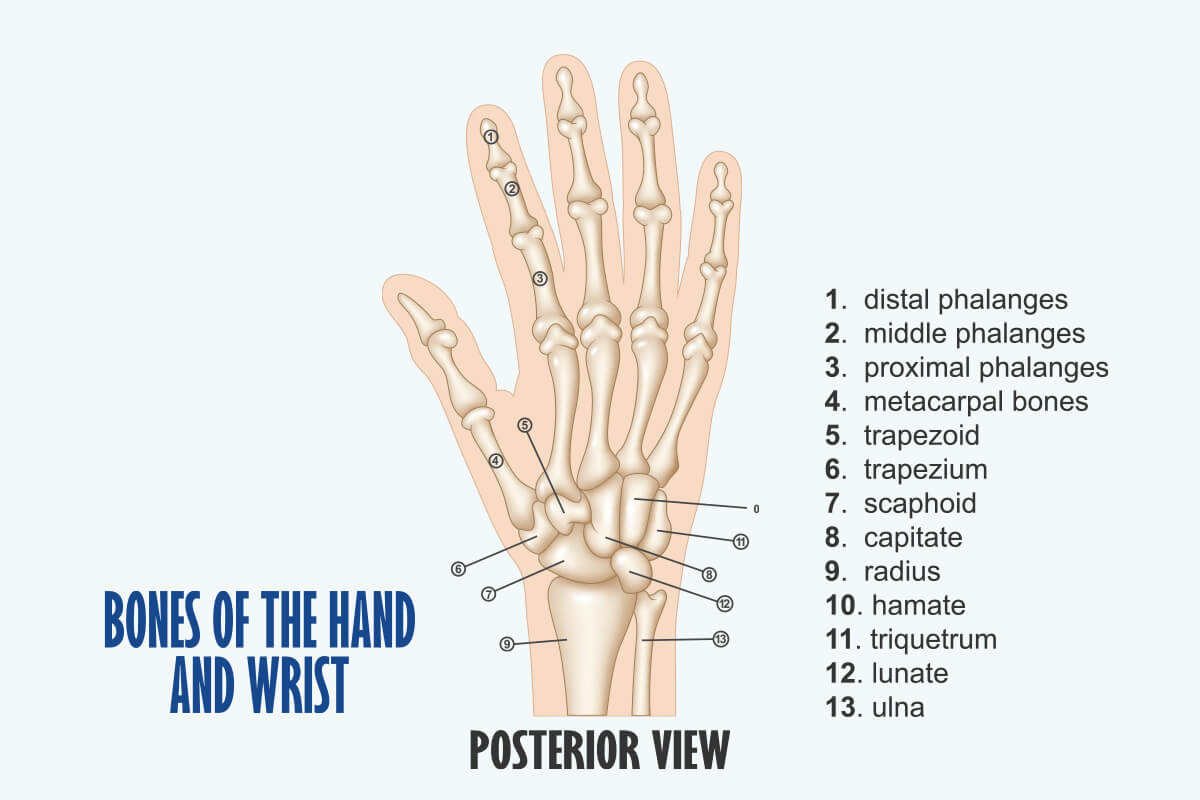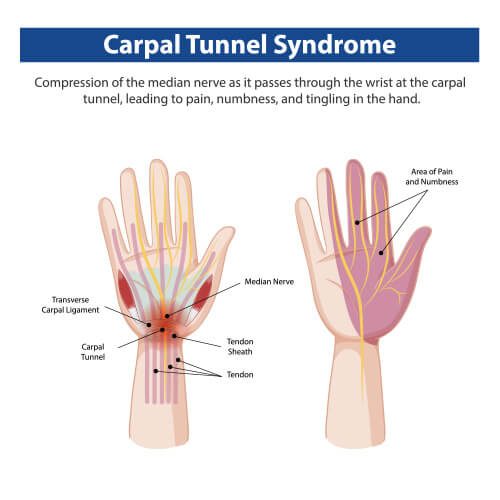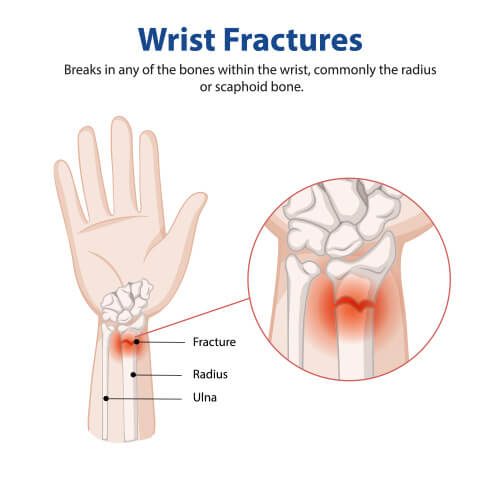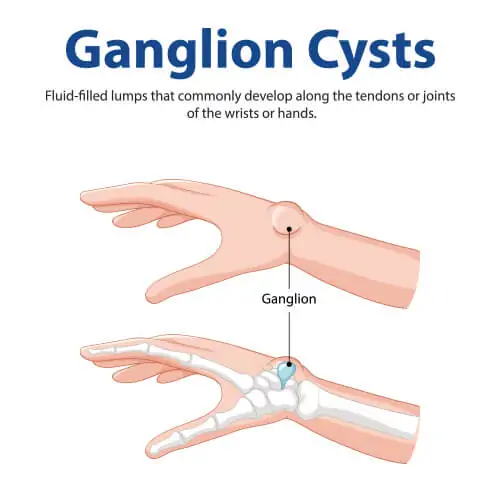Ease wrist pain today — so your hands stay strong for tomorrow
We often take our health for granted until something as simple as wrist pain reminds us how much we rely on our hands every single day. From driving a car and typing at work to cleaning home and carrying groceries, even the smallest tasks become a challenge when you start feeling wrist pain. That’s why understanding what’s causing wrist pain is so important. In this blog, we’ll explore the top five wrist pain causes and what they could mean for your overall health, so you can get back to doing all the things easily. Let’s start this by understanding the structural part of wrist first and then pain and its causes.
Your wrist is like a tiny control center where dozens of parts team up so you can tackle everyday tasks without a second thought. This area in your body is made up of small bones, strong ligaments, flexible tendons, and busy nerves all doing their jobs behind the scenes. But when something like nerve compression or a fracture happens, these small bones can’t work properly. Pain sets in, and even simple tasks suddenly feel impossible. Getting to the root of your wrist pain is key to finding the right solution and lasting relief. At Pain Treatment MD, our expert pain management specialists are here to help you manage your pain and get back to a smoother, more comfortable life.

It’s very important to understand the situations that make your wrist hurt, because pain is your body’s indication that something needs attention. Research shows that pain in the wrist is often linked to repetitive strain, poor posture, awkward wrist angles, or sudden injuries like sprains or fractures. Common conditions like carpal tunnel syndrome, tendonitis, arthritis, or nerve compression can all make those eight tiny wrist bones and countless ligaments and tendons work harder than they should.
When that happens, you’ll feel pain, stiffness, tingling, or even weakness that makes everyday tasks like typing, lifting groceries, or turning a doorknob feel much harder than they should be. It’s easy to brush off mild pain, but ignoring those early signs can make things worse over time. Studies show that early treatment and the right care plan can help you manage wrist pain better and prevent long-term damage.
Our wrist works hard every single day, that’s why it’s so prone to different types of pain and injuries. Some wrist problems show up suddenly, like a break or sprain, while others develop slowly from repetitive movements, overuse, or underlying health conditions. There are many possible reasons your wrist might hurt, from common injuries and strains to various joint and nerve conditions. Some of the more frequent types of wrist pain come from issues like
These problems can happen to anyone, whether you spend long hours typing at a desk, play sports, lift heavy items, or have health conditions that affect your joints. While the pain might feel similar, the root cause can be very different for each person. That’s why it’s so important to understand the main types of wrist pain and what might be causing them. Knowing what’s behind your discomfort is the first step toward getting the right treatment, protecting your wrist from further damage, and keeping your daily life as pain-free as possible.

Repetitive strain injury, or RSI for short, is exactly what it sounds like, an injury caused by doing the same motion over and over again. It’s also called repetitive stress injury, and it happens when small, repeated movements slowly damage your muscles, tendons, or nerves over time. These injuries are surprisingly common in today’s digital world. Using a computer mouse for hours, typing without breaks, swiping items at a checkout counter, gripping tools, working on an assembly line, or even certain sports training routines can all lead to RSIs.
What makes RSIs tricky is that they tend to creep up gradually. You might feel a little bit of wrist soreness at first, but over time the pain, stiffness, or tingling can get worse and start interfering with daily life. Research shows that taking breaks, using good posture, and setting up your workspace properly can help prevent these injuries. If you already have wrist pain from repetitive strain, early treatment, rest, and small changes to your daily habits can make a big difference in helping you heal and keep doing the things you love without constant discomfort.



Carpal tunnel syndrome (CTS) is one of the most common nerve issues people deal with today. CTS happens when the median nerve, which runs from your forearm into your hand, gets squeezed or compressed as it passes through a narrow tunnel in your wrist. This pressure can cause pain, numbness, tingling, or weakness in your hand, making everyday tasks like typing, holding your phone, or even buttoning a shirt frustrating. Research shows that factors like repetitive wrist motions, obesity, genetics, rheumatoid inflammation, and even pregnancy can increase your risk of developing CTS.
The good news is that a pain management specialist can help you find relief without jumping straight to surgery. They use a combination of advanced diagnostic tools, targeted nerve treatments, medication if needed, and personalized wrist therapy plans to reduce nerve pressure and improve function. They may also recommend ergonomic changes, wrist braces, or guided exercises to keep symptoms from coming back. If you’re struggling with numbness or pain in your wrist, seeing a pain management specialist could be the step you need to get your wrist pain free and make your life smoother.

Arthritis is one of the leading causes of wrist pain. If both wrists hurt and you’re noticing stiffness, swelling, or an ache that flares up with changes in the weather, arthritis might be the underlying cause, especially when that stiffness or swelling doesn’t ease up. There are both non inflammatory and inflammatory types of arthritis that can affect your wrists.
No inflammatory arthritis includes osteoarthritis, where the cartilage in your wrist joint slowly wears away from years of daily use. It’s common as we age or if your job puts extra strain on your wrist. Another type is post-traumatic arthritis, which can develop after an injury that damages the cartilage. Sometimes it’s temporary, but it can also lead to osteoarthritis later.
Inflammatory arthritis, on the other hand, happens when your immune system attacks your joints. Rheumatoid arthritis (RA) is the most common type and can affect any joint, including your wrist. Psoriatic arthritis can develop if you have psoriasis, causing painful swelling in the small joints of your hands. Septic arthritis can occur with a whole-body infection, while gout happens when excess uric acid forms sharp crystals in your joints, often starting in the feet but also affecting the wrist and hand.



Sometimes wrist pain has a very clear, sudden onset. It’s like when you’re playing sports and your wrist gets twisted or bent in an awkward way or you fall off. These acute injuries can range from simple sprains, ligament tears or dislocation to more serious fractures, and they often require immediate attention to heal properly. When it comes to wrist pain causes, acute injuries can be sneaky because the pain might appear mild at first, convincing people to assume they can just “walk it off.”
Here’s something important to know: some of the most serious wrist injuries can initially seem minor. For example, a scaphoid fracture (a break in one of the small bones in your wrist) might just cause mild pain on the wrist at first, but if left untreated, it can lead to serious complications down the road. This is why it’s crucial to have any wrist injury evaluated by a healthcare professional, even if it doesn’t seem severe at first. They can determine whether you need imaging tests like X-rays or MRI to rule out fractures or ligament damage.

It’s alarming when you feel wrist pain without injury as it’s an indication of some underlying disease. Diabetes, for instance, can cause nerve damage (neuropathy) that shows up as pain, numbness, or tingling in your wrists and hands. Thyroid conditions can also affect your joints and soft tissues, leading to aches and stiffness that you might not immediately connect to your thyroid.
Pregnancy is another time when women commonly experience wrist pain. The hormonal changes and fluid retention that come with pregnancy can cause tissues to swell, putting pressure on nerves and causing swollen wrist and hand symptoms. Autoimmune conditions like lupus or rheumatoid arthritis can also show up as wrist pain before other symptoms become apparent. If you’re experiencing persistent wrist pain without an obvious cause, it’s worth discussing with your healthcare provider whether any underlying medical conditions might be contributing to your discomfort.


Many people believe that their wrist pain will go away with rest. However, if you’re dealing with chronic or recurring wrist pain, ignoring it can lead to further damage and make recovery harder. Not all wrist pain needs medical care, minor sprains and strains often improve with ice, rest, and over-the-counter pain medicine. However, if your pain and swelling last more than a few days or get worse instead of better, it’s important to see your pain management specialists. Delaying diagnosis and treatment can lead to poor healing, limited range of motion, and even long-term disability.
The team at Pain Treatment MD is experienced in evaluating urgent wrist pain situations and can help determine whether your symptoms require immediate intervention or can be managed with conservative treatment. Remember, when it comes to wrist pain, early treatment often leads to better outcomes and faster recovery.
Waking up with wrist pain can happen if you sleep with your wrists bent, putting pressure on nerves and joints. Carpal tunnel syndrome, magnesium deficiency, arthritis, or tendonitis can also worsen overnight due to inactivity. Adjusting your sleeping position and treating underlying issues can help prevent morning wrist pain.
Yes. There are some medical conditions which can lead to wrist pain. Repetitive strain, arthritis, or nerve compression are among the leading causes.
When both wrists hurt simultaneously, it often points to systemic conditions that affect your entire body rather than local injuries. Rheumatoid arthritis, gout, or repetitive strain usually cause pain in both wrists simultaneously.
If you are suffering from chronic wrist pain then you should seek medical attention as it must be due to some underlying condition like arthritis, nerve issues, or degenerative joint conditions.
Wrist pain might seem like a small issue at first, but as you can see, it can point to a wide range of underlying causes, from simple sprains and repetitive strain to more complex nerve compression and joint conditions. The good news is you don’t have to put up with the discomfort or guess what’s wrong on your own. By paying attention to your symptoms and getting the right help early on, you can protect your wrists, find relief, and get back to living life without constant pain holding you back.
At Pain Treatment MD, our team is here to help you understand what’s causing your wrist pain and create a personalized plan that works for you. So, listen to what your body’s telling you. Your wrists do so much for you every day, and they deserve the best care in return. If your pain sticks around, don’t wait. Reach out, get the answers you need, and give your wrists the support they need to keep doing all the things you love.


Surgical pain occurs after any surgical procedure. Usually it’s a normal part of healing but it intensity depend upon on the type of surgery, and patients overall health status.